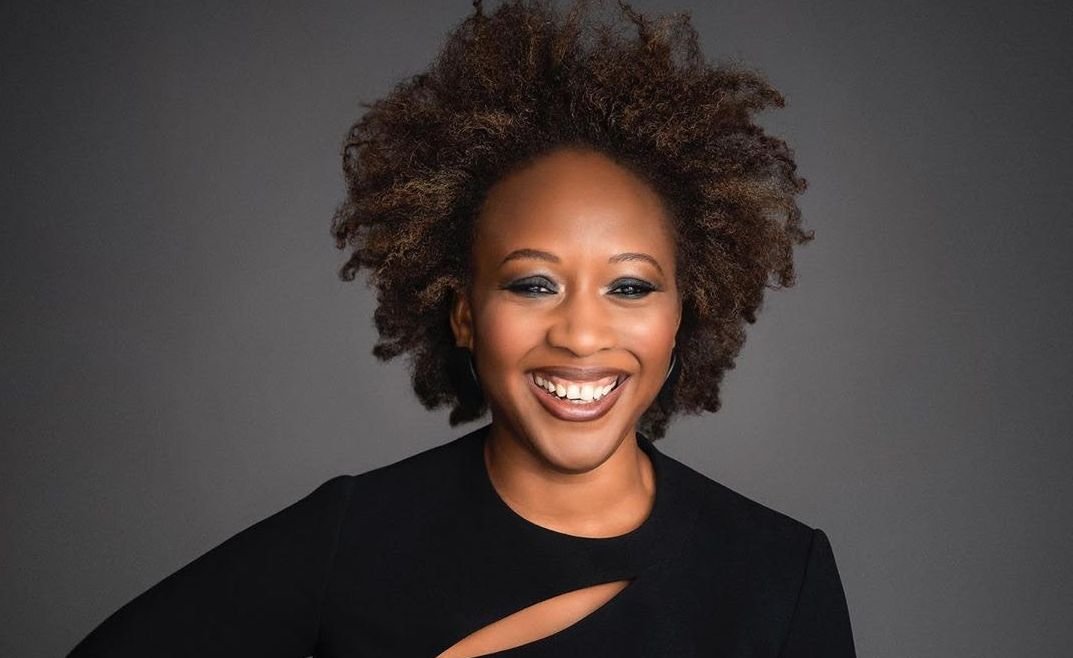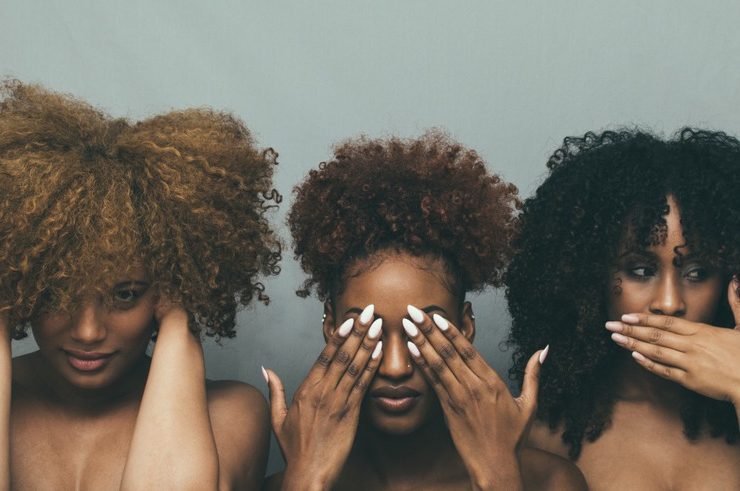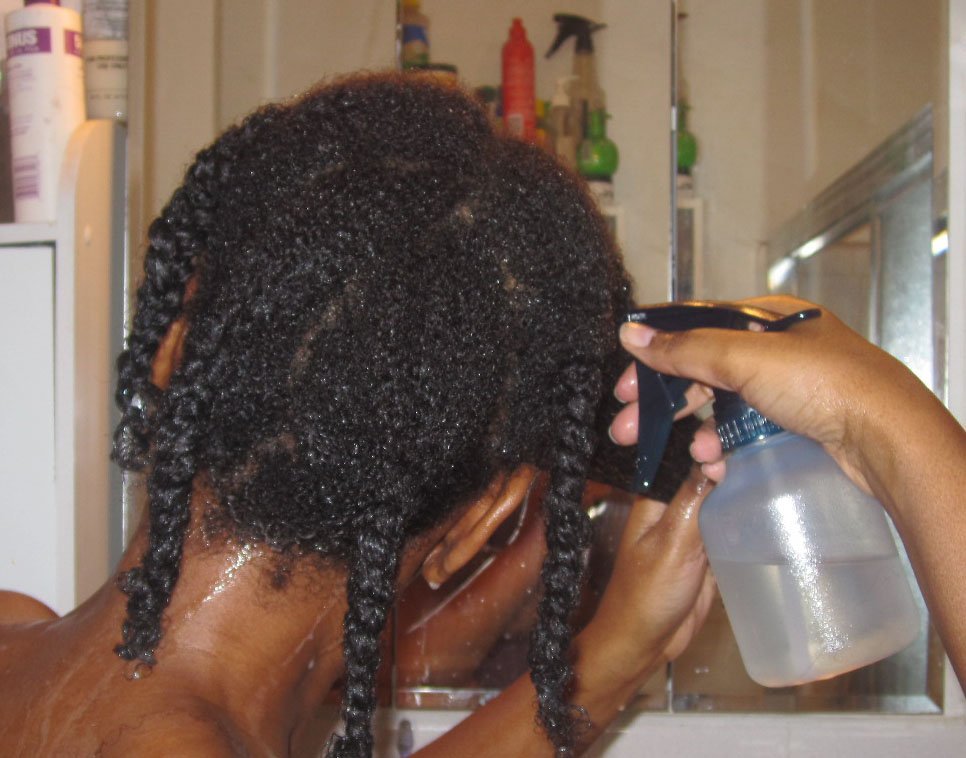Relaxed Hair to Natural Hair – Basics Of Transitioning


The Big chop isn’t for everyone!
There are some people who want to go natural, but dont want to do the big chop; It takes a very bold and brave lady to rock a low cut!
I get a lot of questions from people trying to return to natural hair through transitioning; many are afraid of just cutting of all their hair off.
So, if you fall into this category, luckily for you, there is a way to transition gracefully from relaxed to natural hair!
Lets get into it..
Here are a few transitioning guidelines:
1. Trim: Start the process with a good trim! You need to get rid of all the thin, dead and split ends from your relaxed hair.
The longer you transition, the more brittle those ends will become.
So, you might as well cut them off.

2. Avoid all chemical treatments: Some transitioners tell me that they texturized their hair.
You should all know that texturizing is a NO NO – they are not natural or healthy for your hair, they are essentially mild relaxers.
Texturizers contain similar chemicals as relaxers; sodium hydroxide or calcium hydroxide (no lye).
Thus, it will change the structure of your hair and make it frail.
Use of chemical dyes, keratin treatments, texturizers etc.
Will only prolong the transitioning process and add to the frailty of your strands, which isn’t what your hair needs.
3. Avoid heat: Your hair is already in a fragile state with the two types of hair competing for nutrients.
The last thing you need is heat damage from blow dryers, straighteners, hot combs, curling irons etc.

4. Do natural hair styles: Following from the two points above, if your aim is to return to natural, then do natural hair friendly styles.
More chemical treatments and straightening of your natural roots will only damage your new roots and stunt growth.
I know your hair will start to look weird once the new natural roots become more visible, so do braid outs, twists outs, bantu knot outs etc.
to blend the natural and relaxed parts together.
Also do protective styles; as the name implies, these styles will protect your hair from the environment, encourage length retention and most importantly hide your multiple textures.
DO NOT DO 1 MILLION BRAIDS OR MICRO BRAIDS – these are a recipe for disaster no matter your hair type.
Twist out

Crotchet braids

5. Trim some more: During the transitioning process, trim your hair at least once a month.
The more your trims the faster you will get rid of the relaxed bits. Trimming will also encourage growth and reduce breakage.
The healthier your ends are, the easier it is to complete your long term transition.
Trim as often as you want, until you are fully natural, after which you trim only 2-3 times a year.
6. Pre poo before shampooing: Your hair will get weaker as you get further into the transition.
You will probably experience more and more breakage when you shampoo.
Pre-pooing is a process of moisturizing your hair before you shampoo for extra moisture – this helps improve hair structure and control breakage.
You can use black castor oil, sesame oil, coconut oil, a good growth oil without any chemical additives etc.
Apply the oil to your hair in sections, cover your hair with a heating cap and let in sit for about an hour.
If you don’t have a heating cap cover your hair with a plastic cap and wrap your head with a towel.
7. Shampoo in sections: Please please don’t scrunch your hair together when you shampoo, make sure you part your hair and shampoo in sections – It helps to prevent breakage and split ends.
Always use a SULPHATE free shampoo, and check your shampoo ingredients and make sure its free of parabens, PEG, MEA, TEAs, SLES, etc.
For a short list of some chemicals to watch out for in your shampoo, click here.
8. Detangle with LOTS of conditioner: Everything is about keeping moisture and flexibility of your strands and of course retaining length.
Have your hair in sections and while your hair is damp (NOT wet) apply a good conditioner with lots of slip, allow the conditioner to sit in your hair for a few minutes and use a wide tooth comb, and gently comb from the tips to the roots.
The brazen curls detangling co wash is my favourite co wash and detangler!! It breaks open the knots really easily.
9. Deep condition every week: Deep conditioning is what keeps your new growth and relaxed ends moisturized, as I always say DRY HAIR BREAKS. Your hair is extra dry and fragile in this state, so deep conditioning will keep your hair healthy as you transition.
Make sure to get the balance between protein and moisture right.
You NEED a good protein conditioner as the line where your relaxed hair meets your natural hair is going to be weak.
So I recommend you use a moisturizing or a protein and moisture balanced conditioner each week and then protein condition very 6 weeks.
10. Moisturize! Moisturize!! Moisturize!!!: I can’t stress this enough, DRY HAIR BREAKS!!!, Naturally relaxed hair is always dry (it might look shinny, but its dry and weak), and our natural hair gets dry easily too.
So in order to maintain hair flexibility, we need to moisturize.
Water is the only source of moisture for our hair, thus we need to use only water based products or water when we want to moisturize and seal the moisture up with an oil or butter.
The proper way to moisturize is to apply a water based Leave in conditioner, follow with an Oil and then seal up with a Cream and pure butter, this is called the L.O.C method. You can go the extra mile a spray your hair with clean water before you begin the L.O.C process.
Do you have any questions or comments?
Lets hear them in the comments section below!
For more articles on natural hair and skin care and to find natural products visit
Website – www.beautifullynappy.com
Instagram – @beautifullynapy
Sign Up to Our Newsletter
Get notified about exclusive offers every week!















